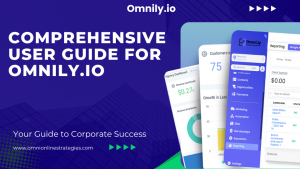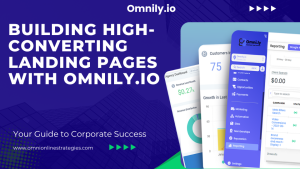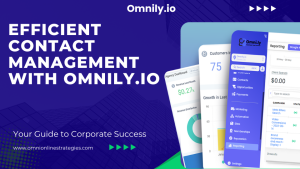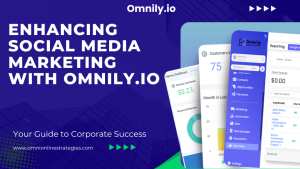Your role as a financial advisor has always been about more than numbers and wealth management. It’s about helping people secure their futures, achieve their dreams, and perhaps most importantly, address the fundamental human desires for survival, security, respect, and peace of mind. But to do that effectively, you need to be visible, relevant, and engaging. That’s where our unique, high-converting financial advisor marketing strategies come in.
The Anatomy of High-Performing Financial Advisor Marketing Strategies
Imagine a funnel. At its top, you have your reach out strategies. These are the ways you get in front of potential clients—whether it’s organically, through pay-per-click (PPC) advertising, or the oft-underrated art of the cold email.
Reach Out: Making the Connection
Your outreach must be intentional, and the tool we heavily recommend is cold emailing. Cold emailing for financial advisors might sound counterintuitive. It’s easy to worry about coming across as spam or intrusive. But here’s the secret—it’s all about how you frame it. Your cold emails are not just communication. They’re opportunities to connect, to empathize, to start a conversation around the very real, very human concerns your potential clients have.
Problem Solving: Understanding and Addressing Client Pain Points
As we move down the funnel, we get to the heart of the matter—problem-solving. To truly address the pain points of your clients, we must first understand them. This requires meaningful segmentation of your audience.
But we’re not talking about the standard, surface-level segmentation here. We’re delving deeper, into the realm of human needs and desires—survival, social status, breeding, respect. What are the fears, hopes, and dreams that keep your clients up at night? What financial hurdles are blocking their paths to fulfilling these basic needs?
This is where you, as a financial advisor, can create a discourse that resonates deeply with your clients. Show them that you understand their struggles and that you’re here to guide them through the financial maze.
Communication: The Art of Storytelling
It’s not enough to understand and empathize—you need to communicate your understanding effectively. This is where storytelling comes in. Humans are intrinsically drawn to stories. They captivate us, elicit emotions, and, most importantly, help us see ourselves in the narrative.
Donald Miller once said, “The greatest lie I believed was thinking that life is a story about me.” Your marketing message needs to reflect this understanding. It’s not about you—it’s about them. Their challenges, their dreams, their financial journey.
Lead Capture, Nurturing, CTA, and Sell: The Final Stages
Lead capture is the next step. Once you’ve connected with potential clients and resonated with their pain points, you need a system to retain and nurture those leads. An effective financial advisor email marketing strategy can play a huge role in this, keeping you in regular contact with your leads, providing them with valuable advice and insights.
Then comes your call-to-action (CTA)—the pivotal moment where you invite them to take the next step, whether that’s scheduling a consultation, signing up for a seminar, or subscribing to your newsletter. Once you have successfully guided them through this process, the selling stage becomes more of a natural progression than a hard push.
Making It Real: Marketing with Authenticity
The heart of this approach is not about formulas or algorithms. It’s about empathy, authenticity, and understanding that behind every financial decision is a human being with their unique story. This is not a cookie-cutter, one-size-fits-all marketing strategy. This is about deeply understanding your clients’ core desires and fears, then using that understanding to offer a service that truly meets their needs.
This authentic marketing strategy acknowledges the complexity and richness of human experience. It requires you to be not just a financial advisor, but also a listener, a problem-solver, and a storyteller. It’s about creating a genuine connection that fosters trust and shows your clients that you’re there for them, not just their wallets.
As you employ these marketing strategies, always remember: Your financial advice isn’t just shaping your clients’ financial futures—it’s impacting their lives. Every email sent, every landing page created, every sales funnel built should resonate with this reality. After all, the true essence of financial advising is not just about wealth—it’s about people.

Building the Financial Advisor Sales Funnel: A Step-by-Step Guide
Step 1: Cold Emailing – Expanded
Email Deliverability: This is the ability of your emails to reach the inbox of your recipient without bouncing, being marked as spam, or being blocked by filters. Improving deliverability involves several factors:
Sender Reputation: This is built over time and is affected by the number of emails you send, how frequently they’re marked as spam, bounce rates, and engagement rates. Maintain a good sender reputation by regularly cleaning your email list, keeping bounce rates low, and encouraging interaction.
Content Quality: Filters can flag emails as spam based on their content. Avoid spammy words, excessive use of capital letters or exclamation points, and ensure you include a clear unsubscribe option.
Authentication: Set up SPF, DKIM, and DMARC records for your email. These authenticate your email server and significantly increase the chance of your emails landing in the inbox.







